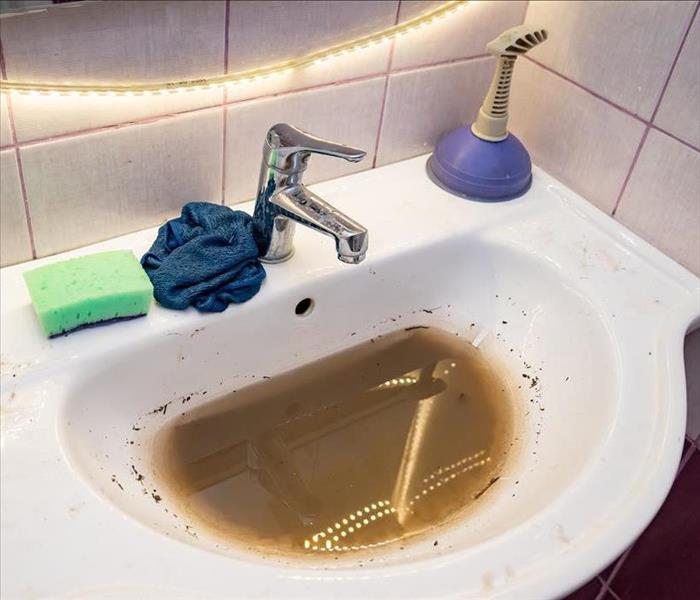Consider Calling a Professional for Sewer Backup Cleanup
7/20/2022 (Permalink)
From hearing gurgling sounds while flushing to noticing a bathtub backup or noticeable odors when running water in a sink, there are many indications that your Clearfield, UT, home has a sewer backup. After the mess happens, it is important to consider the cause and take the proper steps for safe cleanup.
Common Backup Causes
While some sewer issues may be out of your control, there are common culprits that may be preventable. Key causes include:
Clogs: Like your drains, sewer lines also get clogged. The easiest way to avoid both types is to ensure everyone in the home only flushes what is meant to be flushed down the drains or toilet.
Tree Roots: Depending on the type of material your plumbing is made out of, they may be prone to damage by tree roots. Roots may easily find a way in and create cracks that may lead to a line collapse. Although difficult to prevent, switching to plastic pipes or having a plumber regularly clean the main line can stop a bigger issue.
Sewer Main Issues: Unless your home has its own septic system, the plumbing in it all leads to the same main city sewer. If that main has an issue, it may affect an entire neighborhood. Heavy rainfall is often the cause of this type of sewer issue.
Steps for Sewer Backup Cleanup
Anytime there is a water issue associated with the sewer, it should be approached as if it was caused by natural flooding. That means considering it contaminated water that needs to be properly taken care of. If dealing with a small amount of water, it may be a relatively easy cleanup. If the mess is large, it’s recommended to contact a water damage cleanup and restoration company to ensure your home is returned to a safe environment.
Regardless of the situation you find yourself in, here are key steps when dealing with sewer water:
- Prior to cleanup, ensure that the water hasn’t risen high enough to reach any electrical outlets. If it has, turn off the power and contact an electrician to ensure it is safe to enter the area.
- Wearing protective gear is a must. This should include eye protection, a face mask, rubber boots and disposable clothing.
- During cleanup, ensure the main water line valve is shut off. Even if another area of the home isn’t affected, using a sink or toilet may cause an additional backup.
- If possible, open any windows in the affected area to get proper ventilation.
- The most important part of the cleanup process is removing the water. A wet/dry vacuum may quicken this process.
- Determine which belongings may or may not be salvageable. Items that are made out of a porous material may need to be properly disposed of.
- The final steps require cleaning and sanitizing every part of the affected area.
Dealing with a sewer backup isn't as simple as mopping up. Prior to dealing with the mess, it is important to determine the cause of the problem and follow safety guidelines when handling the contaminated water.



 24/7 Emergency Service
24/7 Emergency Service
